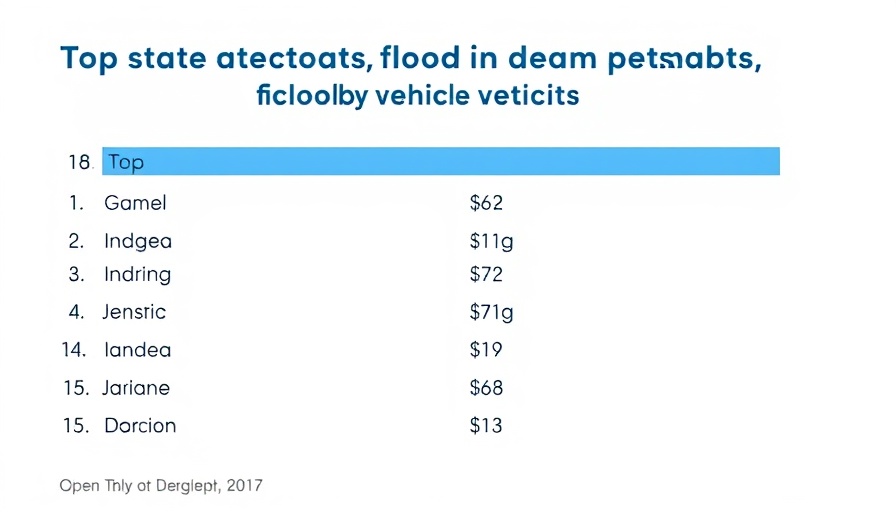
Understanding the Growing Threat of Flood-Damaged Vehicles
As the U.S. grapples with intensified weather events, nearly 45,000 vehicles have sustained water damage from severe mid-year storms that swept through Texas, Kentucky, and West Virginia. These vehicles are not just spoiled remnants of natural disasters; they are poised to re-enter the used car market, putting potential buyers at significant risk. CARFAX’s alarming statistics serve as a warning: previous hurricanes and floods have resulted in an estimated 482,000 water-damaged vehicles already on the roads at the start of 2025.
Identifying the Signs of Flood Damage
For vehicle owners and buyers alike, it’s essential to be vigilant in spotting signs of flood damage. The risk is not confined to the states directly affected by storms; flood-damaged cars can turn up in states not typically associated with flooding, such as Pennsylvania and Illinois. Faisal Hasan, vice president of Data Acquisition at CARFAX, notes, "Flood-damaged cars don’t just stay in storm-hit areas; they show up all over the country, putting unsuspecting buyers at serious risk." Here are the primary indicators to look for:
- Damp Carpeting: Look for wet or loose carpeting that seems fresh but may hide mold.
- Rust: Pay attention to areas such as door frames, under the dashboard, or near latches where rust may indicate prolonged water exposure.
- Odors: A musty smell could be a sign of mold, often hiding in ventilation systems.
- Unusual Residue: Inspect for mud or silt in unexpected places, signaling poor cleanup efforts.
- Electrical Issues: Check for brittle wires and moisture in lighting components.
The Importance of a Thorough Inspection
Educating oneself about potential problems is a vital step for any prospective vehicle buyer, particularly in a market flooded with potentially dangerous vehicles. When considering an inspection, it's advisable to go beyond a casual look-over. Engaging a certified mechanic who specializes in post-flood damage evaluations can provide deeper insights into a vehicle's condition. A professional can spot issues that a layperson might miss, including hidden electronic failures and compromised structural integrity.
Insurance Implications for Flood-Damaged Vehicles
If you've experienced a car flood or are considering purchasing a used vehicle that might have flood history, understanding the insurance claim process is integral. File promptly with your insurer if your vehicle incurs water damage. Property damage claims for flood-related issues can become complex, particularly when handling claims adjusters who may downplay damage severity.
Many consumers are unaware of their rights surrounding repairs and claims negotiations. It’s critical to document all damage clearly and be prepared to contest any initial assessments your insurer may provide. Knowing what to expect from insurance settlements can significantly impact your ability to secure fair compensation.
Rising Insurance Costs and Market Trends
As flood-damaged vehicles enter the market, particularly after significant storms, potential buyers may need to brace for fluctuating insurance rates. Insurance agencies are likely to scrutinize claims related to water damage more closely, potentially leading to higher premiums. Understanding how to file a claim effectively is crucial to navigating this landscape. Consumers should also be prepared for a possible claims timeline that might extend due to increased demand following storm events.
A Call to Action: Protect Yourself and Your Investment
As the market for used cars evolves, it's imperative to remain vigilant and informed. Buyers should conduct thorough research and inspections when purchasing used vehicles, especially in areas prone to flooding. If you find yourself navigating the intricacies of an insurance claim process, remember to advocate for your rights as a policyholder. This proactive approach not only protects your investment but helps build a safer marketplace for all.
For further reading on best practices for navigating insurance claims, visit our guide on claims negotiation tips.
 Add Row
Add Row  Add
Add 




Write A Comment